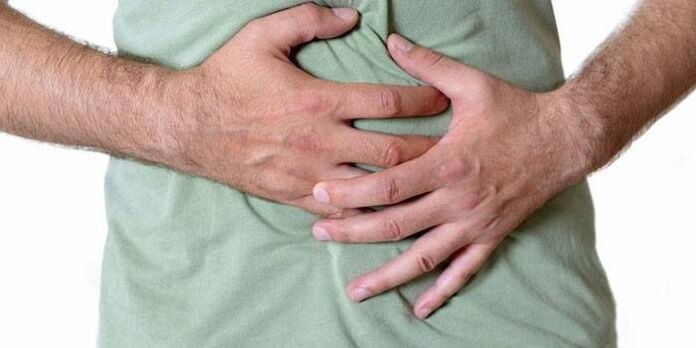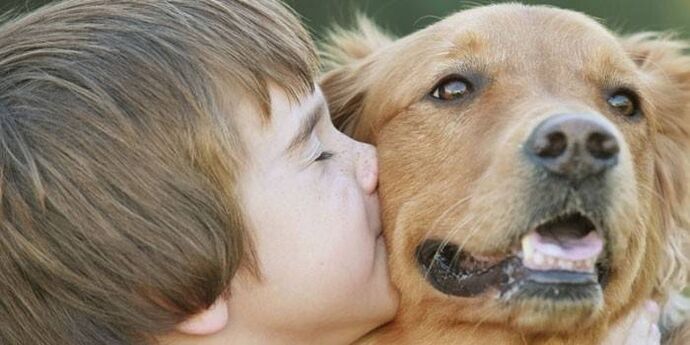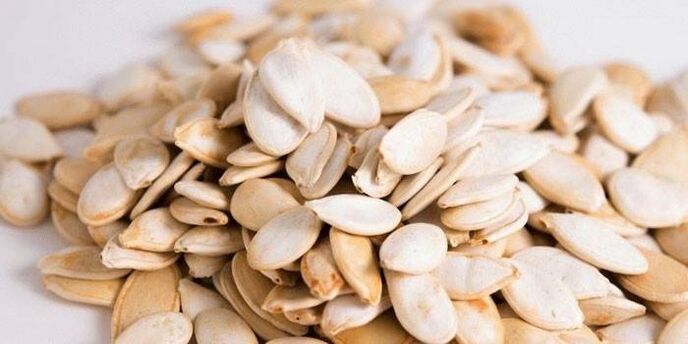Treatment of diseases caused by parasites is an urgent issue for populations in warm and hot climates. According to the World Health Organization, 25% of the world's population is susceptible to helminth infections. The parasite has the ability to survive for a long time (over several years) in the host's body, without losing its presence and gradually destroying organs from the inside. Most helminthic diseases are accompanied by allergic reactions and suppressed immune defenses, leading to serious illness and even death.
What are worms?
Worms (worms) - the common name for parasitic worms, whose owners are humans or animals. Currently, there are more than 250 species of helminths on the planet (about 90 of them live in the CIS). In length, worms in the human body can reach several meters, but most are 20-40 cm in size, helminths are capable of living in most organs of the human body, eating the internal forces of animals. host, weaken and lead to the onset of disease.
The peculiarity of helminths is that their full life cycle cannot take place in the host organism - conditions that are not specific to the human body are necessary for the maturation of the eggs. The prolonged presence of worms is due to reinfection (ingestion of mature eggs in the mouth, then into the stomach and intestines). After the helminth eggs enter the human body, larvae emerge from them and begin to move throughout the body. Most helminths "live" in the intestines, but some are capable of traveling through the bloodstream to other organs (lungs, liver, heart, brain, eyes).
In the process of infection and further development to adults, worms in the human body have the following pathogenic effects:
- mechanical violation of the integrity of the intestinal wall;
- exposure to toxic waste products of helminths;
- absorption of useful substances necessary for a person by parasites;
- Closed hepatic ducts, intestinal lumen with worms (rarely lesions due to large helminths).
Helminthiases are a group of diseases caused by infestation of helminths. Children are susceptible to such diseases, because their immune systems are not fully formed and in addition, children are not able to take care of their own personal hygiene. Further from the child, it is possible to infect large family members, which contributes to further spread.
For helminthiasis, the specific symptoms are not specific, because the clinical picture of helminthiasis is similar to the signs of gallbladder, liver, and gastrointestinal tract pathology, therefore, the laboratory test isrequired for an accurate diagnosis. In addition, asymptomatic transport is often detected, the diagnosis of which may present certain difficulties.

Types
Based on morphological characteristics, helminths are divided into 3 large groups: roundworms, tapeworms and flatworms. Each type is divided into several classes. Helminthiases are grouped into groups based on the type of worm that causes the disease. Features of the varieties of helminths and the pathologies they cause:
- Roundworm (roundworm) is a heterozygous helminth of relatively small size (2-40 cm), widespread due to its ease of transmission. Roundworm infection occurs when the eggs of the parasite enter the host's mouth from the feces of the carrier. The most common representatives of helminths are pinworms - they are infected in 90% of cases. Pinworm larvae cause helminthiasis, accompanied by severe exhaustion and gastrointestinal disorders. The second most common helminthiasis is caused by roundworms and is called ascariasis - this is a disease in which the parasites infect not only the human intestinal tract but also other organs (liver, lungs, heart). Ascariasis can cause internal bleeding, the appearance of allergic reactions, in children - retardation of growth. The so-called flagellates, despite their small size (3-5 cm), can poison the human body for 5 years, causing trichocephalosis. The influence of Trichinella worms leads to the development of trichinosis, a characteristic feature of which is damage to muscle tissue.
- Tapeworms (cestoses) are the largest representatives of helminths (10-15 meters). These are same-sex parasites, i. e. their reproduction is carried out by an individual. An obligatory stage in the life cycle of tapeworms is the development of hooves in the body. The psyllium eggs enter the environment in the faeces of the host animal. In addition, it is possible to spread the infection through contaminated meat. For example, insufficient heat treatment of pork leads to infection with pork tapeworm, beef - with beef tapeworm. Echinococcosis, caused by tapeworms of echinococci, of which a person is an intermediate host, is considered a serious parasitic disease. This pathology leads to the formation of cysts in the organs, which can only be eliminated with the help of surgical intervention.
- Flatworms (flukes) are small (7-30 mm) and usually affect the liver and biliary tract. The fluke disease can lead to the development of hepatitis, gallstones. The main feature of flatworms is that there are suckers on the surface of the body, which have the function of sucking up nutrients and blood. The fluke infection is caused by eating undercooked fish and seafood. The main representatives of flukes are liver flukes and large liver flukes; the first cause of opisthorchiasis, the second - schistosomiasis.
A distinct niche among parasitic invasions is occupied by protozoan infections caused by the simplest single-celled microorganisms. The reproduction of these parasites occurs through division, so their numbers increase rapidly. The most common type of protozoan parasite in our region is lamblia, it exists in two forms - vegetative and spore-forming (spore). According to statistics, every third child is infected with giardia, because the infection occurs when only 2-10 lamblia cysts enter the intestine.

Reason
Entry of helminths and protozoa is accomplished by oral - fecal route - eggs or adult spores enter the host's mouth and intestines from the feces of infected animals. Science knows four main ways of infection:
- Contact - is done when a person comes into contact with a carrier of the disease (animal, bird, other person), which leads to the development of contact helminthiasis.
- Infection through soil and water, containing pathogenic eggs or cysts, causes helminthiasis.
- Infection occurs when eating raw or undercooked meat and fish leads to the development of biogenic helminthiasis.
- A small percentage of infections are caused by insect stings.
How to treat human worms
Symptoms for lesions caused by different types of helminths are often the same. The most prominent and common signs are sudden weight loss, bad mood, pale skin, itching in the anus. At the same time, some symptoms can still help with the diagnosis - for example, dysfunction of the gastrointestinal tract, nervous system signaling the presence of tapeworms in the body, allergic reactions and rashes on the skin. skin - flagella, v. v. How to get rid of worms from a person, what methods and drugs exist for this - these problems are solved by an infectious disease doctor.
Determining the correct diagnosis is based on the correct identification of the type of helminth causing the disease. This may require laboratory tests (urine, blood, stool, bile) and other diagnostic measures (ultrasound, fluorography). It is necessary to start eliminating the parasites immediately - the longer the worms stay in the body, the more difficult it is to escape the consequences of defeat. The physician prescribes treatment based on the patient's weight, sex, and age, taking into account the individual characteristics and general condition of the patient.
Successful eradication of worms in humans is ensured not only by deworming treatment, but also by following a health-promoting diet and preventing new infections. Previously, folk methods were used only to get rid of parasites, while now they are used as an additional measure against helminths, since many synthetic dewormers have appeared. on the pharmaceutical market.
Modern pharmacology has about 20 types of deworming drugs for humans. Among them are drugs with a wide and narrow range of action:
| Type of medicine | Point |
| Against roundworms (to get rid of roundworms | Ascariasis, roundworm, gnathostomiasis, helminthiasis, strongyloidiasis, strongyloidiasis |
| Anti-fluke (to get rid of flatworms) | schistosomiasis, fascioliasis, fascioliasis, fascioliasis |
| Protivocestodnoy (to get rid of tapeworms) | Echinococcosis, diphyllobothriasis, teniasis, teniarinchiasis, diphyllobothriasis |
How to remove worms from a person
Most anthelmintics are effective against adults - eggs and larvae are not significantly destroyed. For this reason, doctors recommend repeating the course after 2-3 weeks to rule out re-infection. In addition, experts recommend that, when treating certain types of helminthiasis, it is advisable to use an enema in the evening or take a laxative after taking it in the morning.
Among the folk remedies, the most effective are pumpkin seeds, garlic, and grated tubers. The mechanisms of action of most drugs and non-traditional drugs for deworming include disruption of the neuromuscular system of the worms, inhibition of metabolism (due to inhibition of fumarate reductase), and destruction of worms. destroy the connective tissue of the worm.
During treatment, the patient may appear signs of toxicity: intestinal disturbances, headache, vomiting, allergic reactions, abdominal pain. Treatment of human worms with anthelmintics should be done as prescribed by your doctor and according to the manufacturer's instructions to avoid complications and side effects.
Tablet
All dewormers should be taken with meals with a glass of liquid (water, milk). Comparative characteristics of several deworming tablets. All drugs are prohibited for use during pregnancy and lactation:
| Active ingredients of the drug | Work | Point | Method of application (for adults) | Side Effects | Contraindications |
| Pirantel | Nerve endings are blocked in the worm muscle | Intestinal helminth disease, ascariasis, non-fibrotic disease, strongyloidiasis | Up to 75 kg - 15 ml of syrup at a time, 75 kg or more - 20 ml | Dizziness, digestive system disorders, skin rash | Liver failure, up to 6 months old |
| Carbendazim | Paralyze the muscle of the parasite | Roundworms, strongyloides, gnathostomiasis, lung cancer | Depends on the type of parasite | Nausea, weakness, allergic reactions | Component sensitivity |
| Floating pyrvinia | Violation of the metabolism of worms | Enterobiasis | 5 mg/kg body weight once in the morning after breakfast | Headache, nausea, diarrhea, allergic reactions | Liver failure, up to 3 months old |
To successfully fight parasites, it is important to carefully observe the rules of personal hygiene, strictly follow the course of treatment prescribed by the doctor. In addition to using deworming drugs, attention should be paid to removing toxins from the body and restoring the functioning of organs, strengthening the immune system. For these purposes, folk recipes (infusions, teas), as well as industrial vitamin and mineral complexes are widely used.
Folk methods of treatment
The use of traditional medicine formulations is highly effective in eliminating parasites. For this purpose, decoctions, tinctures, enemas from the following natural materials are used:
- garlic;
- Pumpkin seeds;
- Walnuts;
- onion;
- herbs: dandelion, hawthorn, wormwood, burdock, nettle;
- oils: hemp, cedar, flax, sea buckthorn.

How to deworm at home
Some types of helminths are successfully treated at home without hospitalization, but if more large worms are infected, supportive hospital treatment may be needed. Home deworming includes both drug treatment and the use of alternative medicine. All payments are accepted only as prescribed by the doctor, self-medication is prohibited.
Pumpkin seeds
Pumpkin seeds are considered the most popular folk remedy for deworming due to their negative effect on worms and the absence of side effects. The anthelmintic property of this product is due to the fact that it contains cucurbitin, which is toxic to most worms. Pumpkin seeds are no more than 300 g per day for adults. Some popular recipes:
- Wash and dry the seeds, grind in a blender, add honey. It is necessary to consume the mixture on an empty stomach, after 4 hours to take a laxative.
- During the day, you should eat 100 g of seeds (divided into 4 parts), after each meal, after an hour take a teaspoon of castor oil, a course of 3-4 days.
Garlic
Garlic remedies are said to be effective against roundworms, pinworms and some tapeworms. In addition, garlic has immune-stimulating properties and does not cause serious side effects. Some recipes for making medicine with garlic:
- Puree 2 lemons and 10 garlic bulbs in a meat grinder, mix well and refrigerate. Take the product 1 tablespoon three times a day.
- Pour 200 ml of warm water over a few minced garlic cloves, leave overnight. It is recommended to drink garlic juice every day 200 ml in the morning on an empty stomach for a week.
Troichetka
This product contains powders of several plants in various combinations. These drugs help not only to fight the penetration of common helminths, but also to normalize the work of the gastrointestinal tract:
- Mix tansy, cloves and wormwood in a ratio of 4: 2: 1. Drink the mixture 1 teaspoon per day before meals with water, the second day eat 2 tablespoons, in all subsequent days - 3The course of treatment is 14 days.
- Mix the calendula seeds, dried bovine jelly, and caraway seeds in a ratio of 2: 1: 1. Take the mixture in the same way.
Signs from worms
Masks based on poisons for parasites have been widely used in getting rid of worms. Such procedures are effective only in cases of intestinal helminth infections. Some popular recipes:
- Pour 2-3 minced garlic cloves into a glass of milk, bring to a boil, let cool. Use enemas for 2 weeks. Children under 3 years of age should not be given a garlic enema.
- Pour ½ teaspoon of baking soda into a cup of water, bring to a boil, and let cool. It is necessary to suck on soda for 30 minutes. The course of treatment is 7 days.
- 1 teaspoon finely chopped sage, pour 500 ml of hot water, boil for 15 minutes, then leave for 4 hours. The course of treatment is 5-7 days.






































